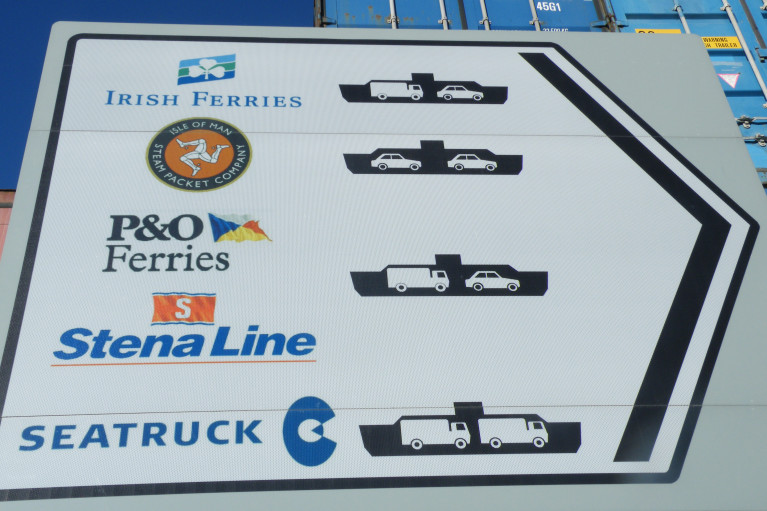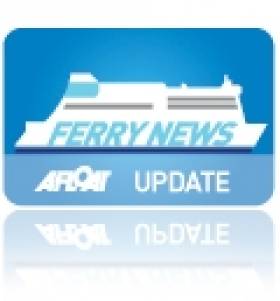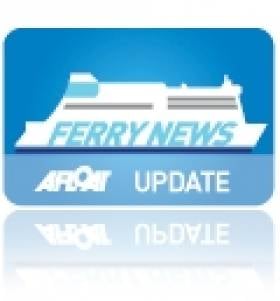Displaying items by tag: Ferry operators
Restrictions Eased on Non-Essential Overseas Travel
Ferryports, airports and the tourism industry are preparing for an uptick in business from this morning as travel restrictions into and out of the country are eased.
From today, Ireland joins the rest of the EU in implementing the Digital Covid Certificate.
This means it will be possible to travel to Ireland from countries within the EU, Iceland, Liechtenstein, Norway and Switzerland with no requirement to quarantine if you have proof of being fully vaccinated, having recovered from Covid-19 or have had a negative PCR test 72 hours prior to arrival.
Passengers arriving from the UK and US will also no longer have to self-isolate on arrival if they have valid proof of vaccination or that they have recovered from Covid-19.
However, the public health advice is that if you are not vaccinated, you should avoid high-risk activities including international travel.
Amid the Delta variant spreading around Europe, Chief Medical Officer Dr Tony Holohan has said NPHET are not discouraging people who are fully vaccinated from travelling abroad.
Speaking at last week's NPHET briefing he advised those still waiting for their vaccine to hold off on international travel.
RTE News has more here.
Bad Weather Disrupts Ferry Sailings
#FerrySailings - The recent bad weather across the Irish Sea and beyond has led to cancellations on some ferry services. For the latest ferry sailing information for today Thursday 18 April, consult the list of operators below.
IRISH FERRIES
* Due to adverse weather forecasts for the Irish Sea, the following Jonathan Swift Fast Craft ferry sailings for Thursday 18th April have either been cancelled or are in doubt:
Dublin - Holyhead 0845hrs and 1430hrs
Holyhead - Dublin 1150hrs and 1715hrs
All passengers can be accommodated on the Ulysses cruise ferry.
* All other Irish Ferries sailings are expected to sail to schedule.
* For further information please contact Irish Ferries on 0818300400 or 016075519.
STENA LINE
* All Stena Line sailings are expected to depart on time.
* For more information on Stena Line sailings call 003531 204 77 99 when travelling to Britain or 0044 (0) 8705 755 755 when travelling to Ireland or Scotland.
CELTIC LINK FERRIES
For information contact Celtic Link ferries on the following 00353 (53) 9162688
P&O FERRIES
* From Sunday 14th April, additional motorist sailings will operate on the Dublin – Liverpool route at 0900hrs ex Dublin and 0930hrs ex Liverpool.
* There are a number of amendments on the Dublin – Liverpool route during until late May.
* During this period, motorist sailings on the route will operate as follows :-
Ex Dublin 2130 hrs 7 nights a week.
Ex Dublin 0915 hrs Tues – Sat.
Ex Liverpool 2100 hrs 7 nights a week.
Ex Liverpool 0930 hrs Tues – Sat.
The 1500 ex Dublin (Mon – Fri), 1600 Sun and
0300 ex Liverpool (Mon – Sat) will operate at this time as FREIGHT ONLY sailings.
For further info Tel (01) 4073434 or www.poferries.com
For further updates click the AA's Roadwatch Ferry Information link by clicking HERE
Belfast to Showcase Holiday World
#HOLIDAY WORLD SHOW -The Belfast Telegraph Holiday World Show will be officially opened by actress and comedian Crissy Rock of I'm a Celebrity... Get Me Out of Here' fame, where she is to 'check in' at the city's King's Hall, this Friday.
The three day show (20th -22nd January) which ends on the Sunday, is Northern Ireland's biggest annual public showcase of travel, tourism and hospitality will offer an array of holiday destinations. Around 30,000 visitors are expected to the show during the weekend.
It will also be the show's 20th anniversary, commenting on the milestone, organiser Edmund Hourican said: "In 2012 we'll be celebrating 20 years of Holiday World Belfast. While much has changed during that time, the event still provides would-be travellers with a hassle-free opportunity to find out about and compare destinations, airlines, travel agencies - and their prices.
"Today's savvy travellers understand that 'best value' doesn't necessarily mean 'cheapest'. Rather, they are looking to find the products and services that best match their requirements. While visitors to Holiday World Belfast are typically prepared to invest in holidays – often heavily - they do want reassurance that they are making the right choices and getting the best deal. The fact that Holiday World is packed with special offers and discounts is a welcome extra bonus!"
Following the popularity of last year's launch by Oasis Travel of the Cruise Pavilion, this part of the show is also to return in 2012, bringing the biggest names in cruising and will include the successful series of cruise lectures suited to both the experienced 'cruiser' and those completely new to this style of holiday.
In addition this year will feature an all new event-within-an-event Over 55s Holiday Show, adding an important new focus to Holiday World Belfast. To read more details of the show, exhibitors including ferry and cruise operators, and for opening times and admission prices click HERE.
Following the Belfast show, it will be the turn of Dublin to host the Holiday World Show in association with The Sunday Times which opens on the following weekend (Friday 27th-Sunday 29th January) in the RDS Simmonscourt Pavillon, Ballsbridge.
Like the Belfast show there will be an Over 55's Holiday Show plus the Caravan & Motorhome Show. For further details of the show they can be viewed HERE.
- Holiday World Show
- Ferry operators
- Cruise operators
- The Sunday Times
- Belfast Telegraph Holoiday World Show
- Kings Hall Belfast
- Oasis Travel
- Cruise Pavillon
- Cruiseliners
- RDS Dublin
- RDS Simmonscourt
- Ferry news
- Crissy Rock
- I'm a CelebrityGet me out of Here
- Irish travel firms
- Irish tourism
- Northern Ireland tourism
The Ferry Fortnight to "Seas the Opportunity"
This weekend sees the start of the National Ferry Fortnight (14-28 May) an initiative to heighten consumer awareness of the extensive ferry network operating to and from the UK, writes Jehan Ashmore.
Central to the National Ferry Fortnight campaign will be a series of promotional offers on ferry routes listed on www.discoverferries.com. The campaign logo will be featured on ferry members' own advertising and website campaigns to highlight the UK's broad network of over 50 routes.
For the first time, ferry passengers will be encouraged to blog and twitter their family and friends when crossing the seas.
Investment in recent years of more modern and versatile fleets has seen an increase in people travelling by ferry, with some 35 million passengers, eight million cars and over 140,000 coaches carried in 2010.
The event is organised by the UK-based Passenger Shipping Association (PSA) and members include Irish owned-ferry operators: Fastnet Line (Cork-Swansea), Celtic Link Ferries (Rosslare-Cherbourg) and Irish Ferries which operate on routes to Wales and France.
In addition the following PSA members (operating between them on Irish Sea, English Channel and North Sea services) are to participate: Brittany Ferries, Condor Ferries, DFDS Seaways, Hovertravel, Isle of Man Steam Packet Co. (IOMSPCo), LD Lines, P&O Ferries, Red Funnel, SeaFrance, Stena Line and Wightlink.
National Ferry Fortnight: 'Seas the Opportunity'
Investment in recent years of more modern and versatile fleets has seen an increase in people travelling by ferry, with some 35 million passengers, eight million cars and over 140,000 coaches carried in 2010.
Central to the campaign will be a series of promotional offers from individual ferry operators which will be announced nearer the dates and also are to be promoted on the www.discoverferries.com website.
National Ferry Fortnight is organised by the UK-based Passenger Shipping Association (PSA) and members include Irish owned-ferry operators: Celtic Link Ferries (Rosslare-Cherbourg) and Irish Ferries (on routes to Wales and direct Irish-France routes).
In addition the following PSA members (operating between them on the Irish Sea, English Channel and the North Sea) are to participate: Brittany Ferries, Condor Ferries, DFDS Seaways, Hovertravel, Isle of Man Steam Packet Co. (IOMSPCo), LD Lines, P&O Ferries, Red Funnel, SeaFrance, Stena Line and Wightlink.

































































